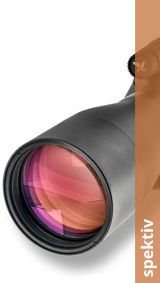All DDoptics binoculars are guaranteed waterproof! The watertightness of optics is guaranteed by DDoptics for 30 years! High-quality riflescopes and binoculars are equipped with extremely precise mechanics. Therefore, no dust or moisture may get inside. If the binoculars or other optical devices are not waterproof, there is a risk of fogging. As fogged lenses, [...]
Whether a riflescope is bulletproof is one of the most important criteria when selecting a riflescope - especially for large calibres. Considerable forces act on the riflescope when a shot is fired. Riflescopes are described as bulletproof if they can withstand these forces without any changes to the housing, the mechanics or the reticle. [...]
Light transmission of optical glass Light transmission is the ability of optical glass or optical systems to "let through" as many light rays as possible. The light transmission of a good or powerful riflescope should be greater than 90 per cent. The transmission performance or transmission loss of optical devices such as binoculars and riflescopes, etc. depends heavily on the optical coating of the prisms or lenses. Another important factor for the level of transmission loss, [...]
Influences of different glass qualities such as BK7 or BAK4 in binoculars and riflescopes The glass quality or type of glass is one of the most important quality factors in binoculars and riflescopes alongside the coating of the optics The optical system of binoculars is made up of glass lenses or, in the case of cheap optics, plastic lenses. A manufacturer can choose from many different types of glass (qualities). ED glass Extra Low Dispersion glass is a special glass with very low [...]
Interpupillary distance in binoculars is also known as the interpupillary distance! The interpupillary distance refers to the optimum distance between the eyepiece lens and the pupil of the eye. With riflescopes, it is a question of trying out what is most comfortable for you. Most binoculars, as well as all DDoptics models, have so-called retractable eyecups, which can be used to set the optimum interpupillary distance. Eye relief [...]
Influence of the optical coating on the quality of binoculars and riflescopes The coating of the lenses has a major influence on the optical quality and, of course, on the price of an optic (binoculars or riflescope). This is where the big differences between good and cheap binoculars are particularly noticeable - especially in terms of brightness and contrast. Uncoated glass reflects (mirrors) approx. 4% of the light per glass-air transition. A lens [...]
Binocular objectives When we talk about the objective of binoculars, we mean the front lens. The front lens is the foremost lens of the objective. Objective lens diameter Formally speaking, an objective lens is a lens system. Therefore, an objective lens is often meant when talking about a lens. The objective lens of binoculars collects the light over a larger area than the eye can. This makes the binoculars [...]
Prisms and prism types in binoculars Lenses have the property of displaying objects upside down and laterally inverted - therefore the image must be rotated again. The image created in this way is first straightened up again by the prisms and displayed upside down. Either so-called porro prisms or roof prisms are used for this purpose. Porro prisms give the entire binoculars their characteristic angled shape, while roof prisms give the binoculars a slim design. Binocular prisms [...]
Mini binoculars - small for every pocket Pocket binoculars, often referred to as mini binoculars or pocket binoculars, are usually binoculars of the smallest design. Ideally, they are foldable binoculars that have a slim roof edge shape. Binoculars DDoptics EDX 10x30 Fieldstar Binoculars for the handbag should have a lens diameter of approx. 25mm for weight reasons and ideally have a magnification of 8x or up to a maximum of 10x (watch out for shaking) [...].
Porro binoculars - binoculars with Porro prisms Binoculars with Porro prisms are the true universal binoculars. The typically larger objective lens diameters (35mm or more), usually in combination with an 8x magnification or even 10x magnification, offer brighter images with higher contrast. For this reason, optics with Porro prisms are ideal as: Binoculars for sporting events Marine binoculars Optics for long-range wildlife observation and hunting or [...]
Roof-edge binoculars or binoculars with roof-edge prisms In the field of professional binoculars, such as hunting binoculars, you often (unfortunately) only find roof-edge binoculars. The main difference to the Porro system is the roof edge, where one of the reflective surfaces resembles the roof of a house (see picture below). These roof-edge binoculars contain lenses with at least 35mm objective lens diameter and are designed for advanced applications, e.g. for professional wildlife and nature observation even in unfavourable lighting conditions [...].
Image field curvature or aberration in optics The image produced by a lens has a spherical aberration by nature. This is known as field curvature or aberration. Depending on the quality of the binoculars, this results in a more or less pronounced blurring of the image towards the edge. Flattener lenses for error correction This error can be corrected using appropriate optical elements - this is known as a [...]


















